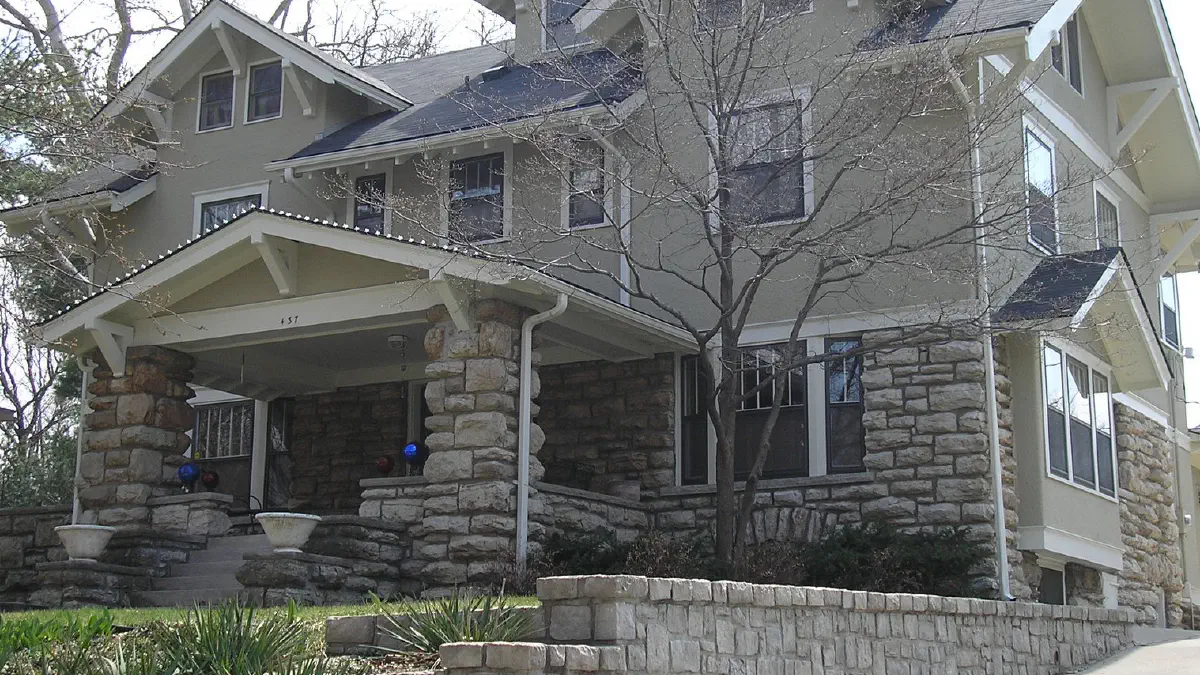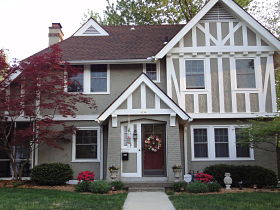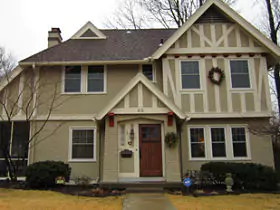Brick and roof colors, landscaping and even your neighbor's house color - these can all factor in when choosing colors for your home.

Choosing Exterior Colors to Match Your Home’s Style
Exterior paint colors should complement your home’s unique architectural style.
Traditional Homes
Traditional-style homes often benefit from muted, classic tones like soft greens, grays, or warm beige shades. These subtle colors help emphasize architectural details without overpowering the structure.
Contemporary Styles
Modern homes frequently use bolder contrasts and sharper color lines. Whites, blacks, and deep grays paired with contrasting trims create a clean and striking visual effect.

How Landscaping Influences Your Exterior Color Choices
The landscape around your home significantly affects suitable exterior paint choices.
Blending with Nature
Muted, earthy colors such as taupe, olive green, or terracotta naturally blend with landscapes, particularly lush greenery. Harmonizing your home’s colors with the environment creates visual cohesion.
Creating Visual Interest
If your landscaping includes vibrant flowers or distinctive hardscaping, subtle house colors can let these elements shine. Conversely, a more understated yard can accommodate bolder home colors to add visual excitement.
Avoiding Common Exterior Color Mistakes
Homeowners often make predictable mistakes when selecting exterior paint colors; here's how to avoid them.
Overly Bright Body Colors
Bright colors may look appealing initially but can quickly overwhelm, especially on large surfaces. Reserve vibrant shades for doors or decorative accents.
The right exterior colors enhance your home’s architectural charm, harmonize with your surroundings, and reflect your personal style.
Ignoring Fixed Elements
Fixed features like brick, stone, or roofing materials must be part of your color equation. Neglecting these elements can lead to visual discord and dissatisfaction.
Learn more about tackling common home improvement issues like trim joint gaps and nail pops.
The Impact of Sunlight on Exterior Paint Colors
Sunlight significantly alters how exterior colors appear, making thoughtful selection essential.
Sunlight Intensifies Colors
Colors often look brighter and more intense in sunlight, particularly those with yellow undertones. Test colors outdoors at different times of day to avoid surprises after painting.
Avoiding Harsh Whites
Pure whites can look harsh and create uncomfortable glare in bright sunlight. Choose softer shades like cream, off-white, or light gray for trim instead.
For more ideas, explore our guide on the best front door colors.
Why Test Painting Is Essential
Small-scale paint tests help ensure your final choice looks perfect in all conditions.

Observing at Different Times
Paint test areas on different sides of your house and observe the colors throughout the day. Colors can shift dramatically from morning to evening.
Cost Savings
Testing prevents costly repainting due to dissatisfaction. Invest a little time upfront to confirm colors before committing to a complete exterior paint job.
Accent Colors: Adding Personality Without Overdoing It
Accent colors can transform your home's exterior by highlighting architectural features without overwhelming the main color.
Strategic Accenting
Use bold or vibrant colors sparingly, like on shutters, doors, or porch railings. This approach adds visual interest without overpowering your home's facade.
Balance is Key
Ensure accent colors complement rather than clash with the primary house color. Keeping accent colors cohesive with your overall color scheme enhances curb appeal.
Choosing exterior paint can feel overwhelming; learn why choosing colors can be daunting and how to simplify the process.
Proper maintenance of your home's exterior paint ensures lasting beauty, durability, and protects your investment.
Maintaining and Refreshing Your Exterior Paint
Regular maintenance keeps your exterior paint looking fresh and protects your home.
Routine Checks
Regularly inspect your exterior for signs of wear like peeling, chipping, or fading. Early intervention can prevent minor issues from becoming expensive repairs.
Timely Refreshes
Plan to repaint every 10-15 years, depending on all the many variables. Keeping your paint fresh enhances your home's curb appeal and prevents deterioration.
Review our customer reviews to see how homeowners maintain beautiful exteriors.
Ready to enhance your home's exterior with confidence? Schedule a convenient time for your painting estimate through our easy and short online booking form. Estimates are typically completed in 30 minutes or less and tailored to your needs.



